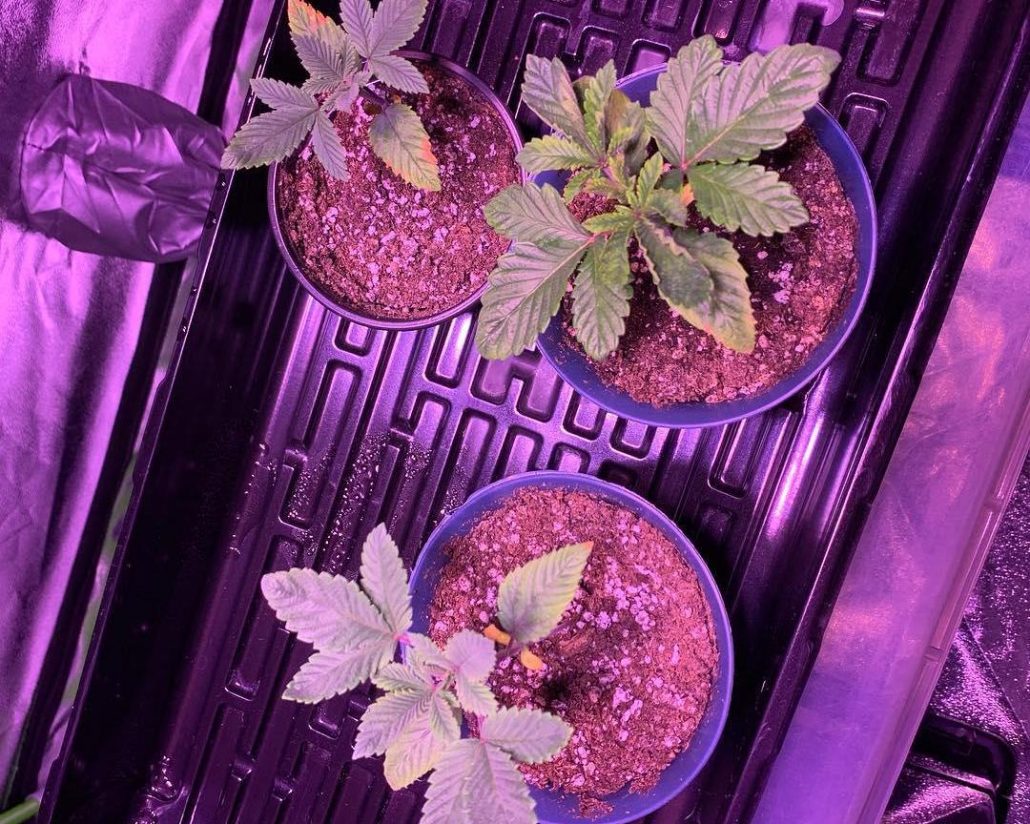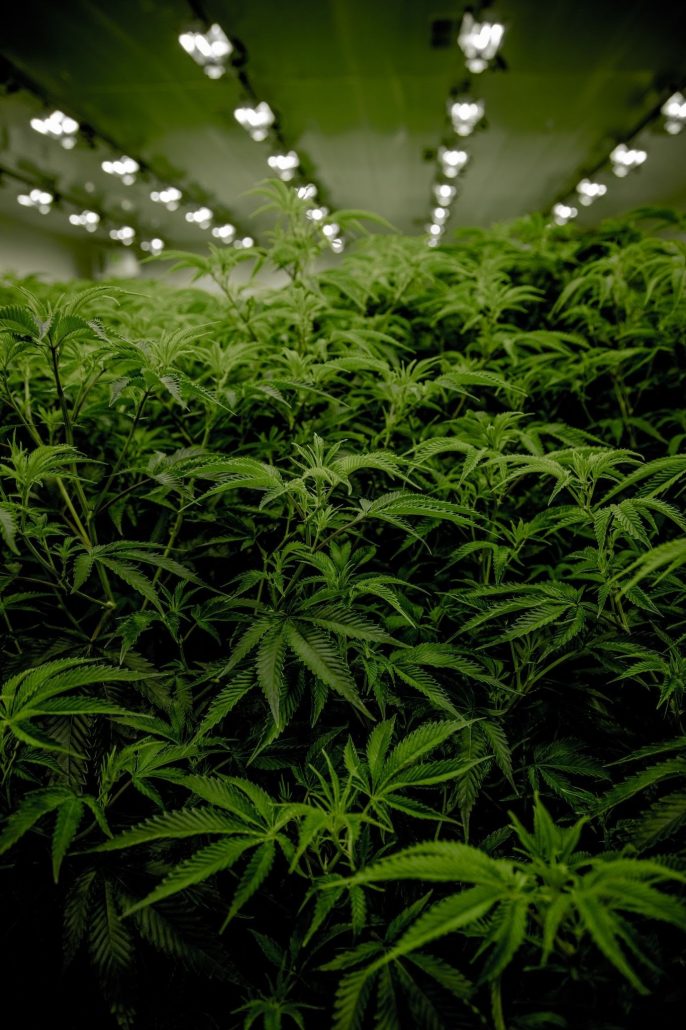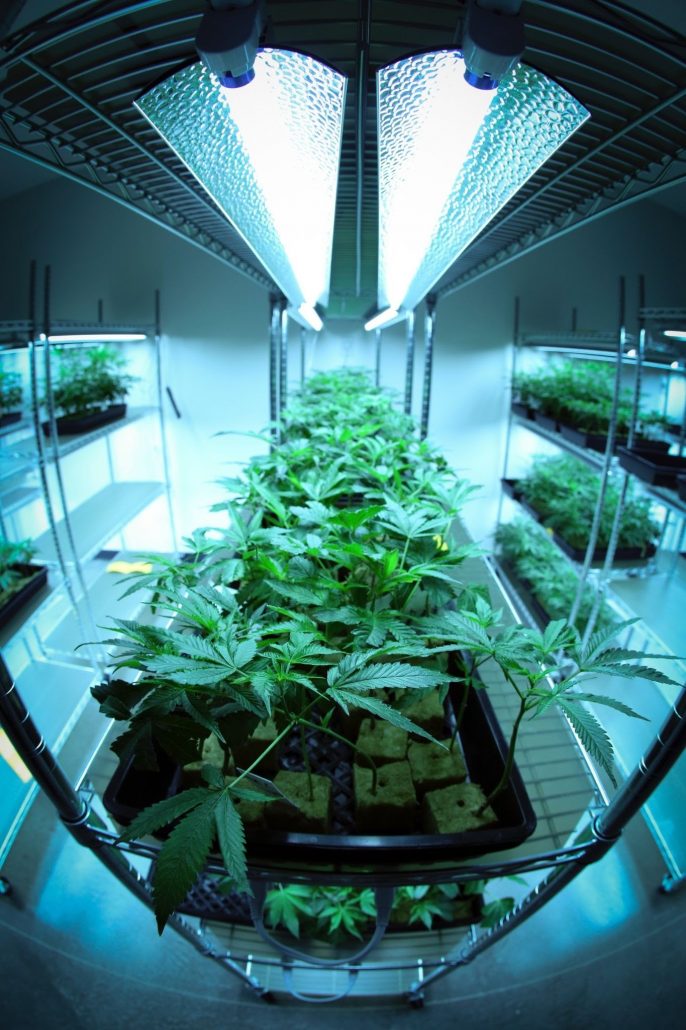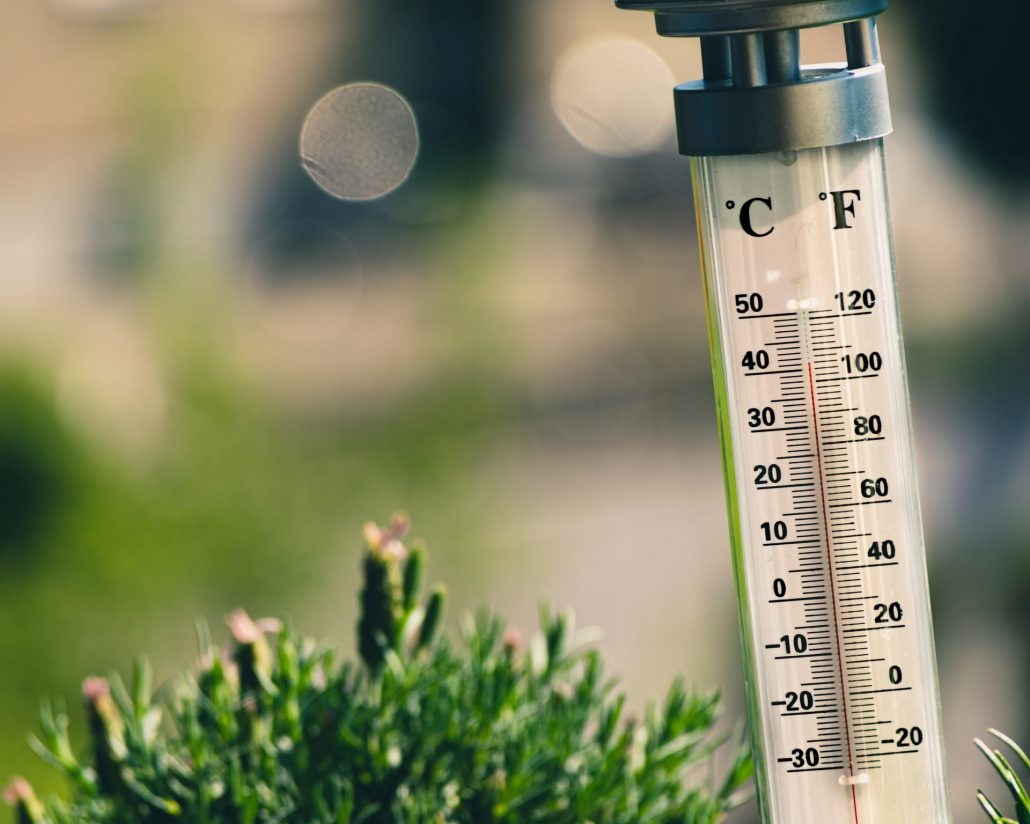Cannabis is a resourceful herb famous for its ecstatic outcome upon consumption. Besides that, it has curative values that are mostly not given as much attention as they deserve. The reasons for wanting to grow weed might vary, which is why grow tents for cannabis are appropriate for small consumers who intend to shorten the chain of getting it. They provide an opportunity for weed lovers to grow and consume at will.
The validation of marijuana in different parts of the world has made it a household plant that users no longer hide. Growing it guarantees you an adequate supply of up to five ounces in a month. Having a small stash at home won’t hurt, nor do you have to rebuild your home to accommodate the process.
 Air conditioners
Humidifiers that you can manipulate
Heaters
Grow Lights
Exhaust and Air Circulation Fans
Grow enclosures allow you to control plant ambiance needs such as light, nutrients, heat, humidity, and water. It is an expensive affair at the beginning, but you can eventually save on the necessities. The tents are fitted with a universal reflective paint that illuminates according to demand or time of the day.
You are in charge of the atmosphere; it will help if you know the proper amounts of the different supplies and times. Unlike natural planting, you save on water or growth additions because there is no wind or downpour along the way.
Decide where to Place the Grow Tent given its Size
Identify where to position the tent before setting up the lights and tools, then take the next step of cultivating your weed (plant). Make sure you check the following factors concerning the location of this addition to your home.
1. Get the measurements right depending on plant count.
The headroom should be sufficient to avoid overheating or too much lighting as it might affect the quality of the herb.
Strong zippers that can withstand frequent up and down movements for a few years while holding in brightness and humidity.
2. Number of Herbs
Knowing how many herbs you want to cultivate will be helpful to determine the size of a grow tent as they range in measurements. Your tent should have room to accommodate the tall marijuana tree in the adult stage. The distance between the lights and plant should remain constant to avoid burning the herb or barging the suspended lights. Even as the trees germinate, there must be a distance of about 18″ from the grow lights for the best outcome.
3. Quality, Cost Vs. Safety
High-end goods might not always equal the quality, but in many cases, it does. Consider getting a top-quality tent with enough room for fitting lights safely. Observing safety will prevent hazardous outcomes in cases where the lights are in touch with pipes or other materials. Although there are no set regulations to know the security measure, what you buy should fit every provision comfortably.
4. Tent Attributes
The cultivation procedure will succeed if the tent properties complement each other. For instance, examination spaces should be placed conveniently where you can check on progress without opening the whole structure. The door should be big enough to allow you to reach the plant’s freely. Portable trays for easy disposal of excess water, straightforward connections of the inlet, outlet fans, vents, pockets for holding gardening tools should be in good shape and freely reachable.
5. Material
Please do not go for weed tents made from PVC as it is highly flammable. Get durable fabrics like canvas and avoid narrow fabrics: the lower the measurement, the slimmer it is, and vice versa, they are measured in “D,” varying from the thinnest 120D and 600D. Good quality material will serve you through several years, withstanding the variations in temperature and humidity.
6. Lighting
Lighting is a critical requirement to indoor growing; Powerful lighting encourages sturdy germination. You can choose between LED lights, High-intensity Discharge lights like HPS, MH, CMH, or T5 grow lights. Consider the canopy, which has to be a considerable distance from the lights. The grow tent must be well lit for the plants to germinate fully.
Air conditioners
Humidifiers that you can manipulate
Heaters
Grow Lights
Exhaust and Air Circulation Fans
Grow enclosures allow you to control plant ambiance needs such as light, nutrients, heat, humidity, and water. It is an expensive affair at the beginning, but you can eventually save on the necessities. The tents are fitted with a universal reflective paint that illuminates according to demand or time of the day.
You are in charge of the atmosphere; it will help if you know the proper amounts of the different supplies and times. Unlike natural planting, you save on water or growth additions because there is no wind or downpour along the way.
Decide where to Place the Grow Tent given its Size
Identify where to position the tent before setting up the lights and tools, then take the next step of cultivating your weed (plant). Make sure you check the following factors concerning the location of this addition to your home.
1. Get the measurements right depending on plant count.
The headroom should be sufficient to avoid overheating or too much lighting as it might affect the quality of the herb.
Strong zippers that can withstand frequent up and down movements for a few years while holding in brightness and humidity.
2. Number of Herbs
Knowing how many herbs you want to cultivate will be helpful to determine the size of a grow tent as they range in measurements. Your tent should have room to accommodate the tall marijuana tree in the adult stage. The distance between the lights and plant should remain constant to avoid burning the herb or barging the suspended lights. Even as the trees germinate, there must be a distance of about 18″ from the grow lights for the best outcome.
3. Quality, Cost Vs. Safety
High-end goods might not always equal the quality, but in many cases, it does. Consider getting a top-quality tent with enough room for fitting lights safely. Observing safety will prevent hazardous outcomes in cases where the lights are in touch with pipes or other materials. Although there are no set regulations to know the security measure, what you buy should fit every provision comfortably.
4. Tent Attributes
The cultivation procedure will succeed if the tent properties complement each other. For instance, examination spaces should be placed conveniently where you can check on progress without opening the whole structure. The door should be big enough to allow you to reach the plant’s freely. Portable trays for easy disposal of excess water, straightforward connections of the inlet, outlet fans, vents, pockets for holding gardening tools should be in good shape and freely reachable.
5. Material
Please do not go for weed tents made from PVC as it is highly flammable. Get durable fabrics like canvas and avoid narrow fabrics: the lower the measurement, the slimmer it is, and vice versa, they are measured in “D,” varying from the thinnest 120D and 600D. Good quality material will serve you through several years, withstanding the variations in temperature and humidity.
6. Lighting
Lighting is a critical requirement to indoor growing; Powerful lighting encourages sturdy germination. You can choose between LED lights, High-intensity Discharge lights like HPS, MH, CMH, or T5 grow lights. Consider the canopy, which has to be a considerable distance from the lights. The grow tent must be well lit for the plants to germinate fully.


 How to Lower Temperature
Surge air circulation in the grow room.
Keep the lights off during the day and on at night.
If you are using High-Pressure Sodium Lights (HPS), a cooling pipe will come in handy.
Add a cooler to help lower humidity levels.
Raising Humidity
Use a hand sprayer bottle to mist: Spray water in the air once in a while.
Pour enough water to the surface to avoid an overflow.
Store water in open containers or wet towels in the weed tent.
A giant humidifier will suffice since it has larger storage, unlike the smaller ones that need reloading often.
Increasing Temperatures
Purchase powerful grow lights
Warm the room using a hot pad from the ground
Suspend a warmer with a thermoregulator to warm the room when necessary.
Conclusion
Cannabis is an herb that raises eyebrows at the mention of its name. However, it has been validated in parts of America, the Netherlands, and using it is no longer a secret. No wonder weed lovers are now cultivating it at home. Hence the use of indoor grow tents. However, germination of the herb needs excellent tolerance, hard work, and stability to get a positive outcome.
Grow tents are more preferred because they are affordable, quick to assemble, no insects can penetrate, they enclose total brightness and savor in the room, encouraging the herb to grow maximally. Besides the above-listed grow tents, the same companies have numerous variations to cater to any hobbyist needs.
How to Lower Temperature
Surge air circulation in the grow room.
Keep the lights off during the day and on at night.
If you are using High-Pressure Sodium Lights (HPS), a cooling pipe will come in handy.
Add a cooler to help lower humidity levels.
Raising Humidity
Use a hand sprayer bottle to mist: Spray water in the air once in a while.
Pour enough water to the surface to avoid an overflow.
Store water in open containers or wet towels in the weed tent.
A giant humidifier will suffice since it has larger storage, unlike the smaller ones that need reloading often.
Increasing Temperatures
Purchase powerful grow lights
Warm the room using a hot pad from the ground
Suspend a warmer with a thermoregulator to warm the room when necessary.
Conclusion
Cannabis is an herb that raises eyebrows at the mention of its name. However, it has been validated in parts of America, the Netherlands, and using it is no longer a secret. No wonder weed lovers are now cultivating it at home. Hence the use of indoor grow tents. However, germination of the herb needs excellent tolerance, hard work, and stability to get a positive outcome.
Grow tents are more preferred because they are affordable, quick to assemble, no insects can penetrate, they enclose total brightness and savor in the room, encouraging the herb to grow maximally. Besides the above-listed grow tents, the same companies have numerous variations to cater to any hobbyist needs.
Factors to Consider Before Buying a Grow Tent
A grow tent is an innovative structure made of fabric. It fits the requirements to facilitate cultivation like lights, air vents, and heat reflectors. These attributes make it possible to grow any plant throughout the year without considering current weather conditions. Indoor cannabis cultivation allows for one to monitor growth, without amplifying the environment. The rooms are easy to erect and manage. All you have to do is decide where you want to place the tent, then begin the process of growing your herb. Triumph of indoor growing practices can only be restricted by cultivators’ potential mastery of the activity. However, it would help if you considered these provisions within the tent before making a purchase.

- Now that you know where to place the grow room, multiply the length x width, then divide by four. The standard rule states that each plant should stand on 4 square feet which helps you know the area that needs lighting.
- Divide the canopy size by 50 to 75W, which gives you the amount of light needed per square foot. Sum up the w/sqft to have the total wattage you require, and remember it may vary for different plants.

Best Weed Tents
An indoor weed cultivator has to master the whole process to get gratifying results. Paying attention to the atmosphere, brightness, moisture is the main task. However, using the correct tool for the job will simplify the process, as provided by the different products below. CoolGrows Reflective Hydroponic Grow Tent It is an excellent choice for cultivating marijuana within a closed space from the initial stages to maturity. The room has a reflective Mylar tent insulated with Silver Aluminum Foil on the inside. A long-lasting zipper that holds in the atmosphere for the healthy development of cannabis. Alongside its one-year warranty, here are additional properties:A double examination window.
An unchallenging entrance thanks to the strong zipper and an examination opening for you to peep whenever you want, to monitor your marijuana growing. Durable canvas void of PVC. A manual makes facilitate simple assembling no matter the location. An impermeable, replaceable floor tray collects any overflows; water, leaves, soil. Air openings ensure proper circulation, and it opens peculiarly for comfortable entry or in and out movement.Apollo Horticulture Mylar Hydroponic Grow Tent
Measuring 48″ x 24″ x 60″, this indoor cultivating tent has strong repeated stitches that prevent illumination from escaping the room. Besides the strong zippers, it is made of heavy fabric strengthened by metallic poles, improving its safety and firmness. The strong weed odors, the much-needed brightness, controlled temperatures cannot escape the room. The weed tent comes with indoor tools, maximum illumination on the interior, brightness, resistance to tearing, thanks to the portable ground tray for easy cleaning. The Mylar skirting also mirrors brightness while retaining shine indoors. Keep the needed atmosphere inside right for the herb to flourish. Erecting the grow room is straightforward with help from a brochure. Using this unique structure within your home is convenient anywhere. If you have any concerns, you can reach out to their excellent customer representative anytime in the three months of warranty, and a money-back assurance if the package is not good enough for you.Gorilla Grow Tent
The unit is freestanding and suitable for any place, even the most isolated zones. Its LED lights are sufficient if you live in an area that has no power. Herbs germinate in almost natural conditions as carbon dioxide is regulated from a tube air cooler that maintains set temperatures in the room. It is a stable structure strengthened with metals, a portable air cooler, and a timepiece.Vivos Horticulture Large Mylar Hydroponic Grow tent
If four weed plants are not enough for you, grow six in this larger structure without strain. Inside this weed, tent is the Mylar fabric that mirrors light maximally. On the outside, it is made of the best quality robust canvas. The zippers are long-lasting and do not allow any brightness from the outside to interfere with the inside. With portable ground trays, gathering water overflow and maintaining cleanliness is effortless.Environment Setup Guide for Cannabis: Optimal Temp and Humidity
Weed herbs need temperatures relative to humans; not too cold or too hot. Therefore, if you experience high temperatures, know that the same is happening to your plants. Set the proper humidity and temperature to determine the outcome. Humidity is the amount of water in the air at a specific temperature. When it is sunny, there is more water in the air than when it is cold. During the day, cannabis needs 20-30 degrees with the lights on, while at night, the herb enjoys lower temperatures without the lights. After deciding where to place your weed grow tent, the strain, nutrients, light provision, number of herbs, water, and aeration, it is time to move to the most critical part of growing, setting the proper temperatures and humidity daily. Weed goes through four growth stages which require varying temperatures and humidity. The correct equipment, Hygrometer (Measure Humidity) and Thermometer (Measure Temperature), will simplify the process for you. Cannabis Growth Cycle 1. Seedling The initial stage is seedling, where cloning happens at high humid levels from 65% to 70% and warm temps of 20 to 30°C while the lights are on. There is more water consumption when humidity is high hence the flourishing of the roots. 2. Vegetating Roots have progressed, increasing water intake, which vapors to cool off the herb. You can bring down the humidity level by 5% each week. For the plant to remain healthy, 40 to 70% is the recommended level, rise temps if need be. With the lights on, keep the temps at 70 – 85 F° (20 to 30°C) but decrease them by 8-9 F° in the dark. As the marijuana plant progresses, it will be able to fight extreme temps more. The plant needs darkness and brightness in totality. It may be challenging but try to set cooler temps at night, maintaining the acceptable variations to encourage growth. In this stage, the plant is favored by increased temperatures and enhancing of carbon dioxide, which will be a success if you note the following: The atmosphere should be enclosed while retaining the recommended standard of indoor germination (1500 PPM) of carbon dioxide in the air. Increase lighting beyond what the plants need. Maintain high temperatures 30 to 35°C or 85 to 95°F. Once buds begin to show, don’t raise the temps too much for good progress. 3. Flowering Keep temps at mid-levels downwards 65 – 80°F or 18-26°C. They should be lower at night than during the day. Strive to maintain the temperature range as this is a crucial stage to get strong, concentrated, and spicy sprouts. Humidity should range between 40 to 50% but not above 60%. Lowering humidity levels to 30 – 40%, low temps with lights on at all times can affect yield and taste. Avoid high temps in this stage as it can have adverse effects on the sprouts like stagnant germination and burning, affecting the yield savor in the fourth and last stage. Adjusting Humidity and Temperature Manipulating humidity and heat levels daily will be challenging because both control the kind of harvest you get. Follow these steps to decrease humidity. Increase the inlet/out aeration speed to increase the airflow within the tubes into the grow room and its location. Always sprinkle water on marijuana immediately when you put on the lights because the temps are down, and evaporation will be slow hence low humidity. When shopping, opt for a good dehumidifier since tiny ones have insufficient stores according to the need, and you have to keep reloading.

